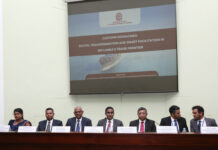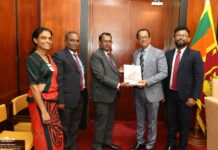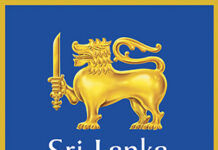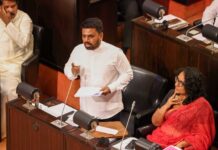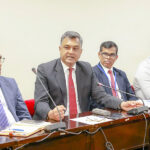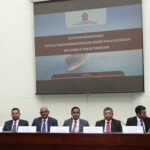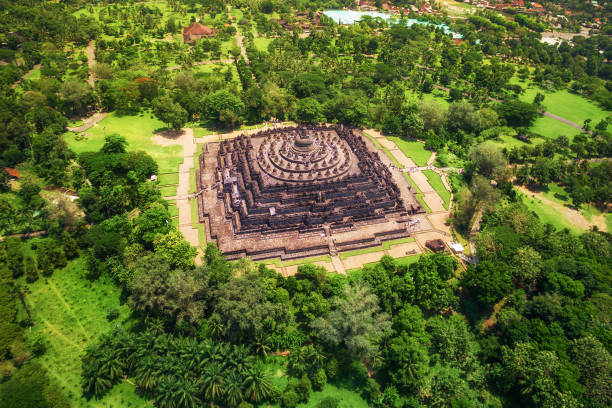
Borobudur, is a 9th-century Mahayana Buddhist temple in Magelang Regency, near
the city of Magelang and the town of Muntilan, in Central Java, Indonesia.
Borobudur is the largest Buddhist temple in the world. Constructed of gray andesite-like stone, the temple consists of nine stacked platforms, six square and three circular, topped by a central dome. It is decorated with 2,672 relief panels and originally 504 Buddha statues. The central dome is
surrounded by 72 Buddha statues, each seated inside a perforated stupa. The
monument guides pilgrims through an extensive system of stairways and corridors
with 1,460 narrative relief panels on the walls and the balustrades. Borobudur has
one of the world’s most extensive collections of Buddhist reliefs.
Built during the reign of the Sailendra Dynasty, the temple design follows Javanese
Buddhist architecture, which blends the Indonesian indigenous tradition of
ancestor worship and the Buddhist concept of attaining nirvāṇa. The monument is
a shrine to the Buddha and a place for Buddhist pilgrimage. Evidence suggests that Borobudur was constructed in the 8th century and subsequently abandoned
following the 14th-century decline of Hindu kingdoms in Java and the Javanese
conversion to Islam. Worldwide knowledge of its existence was sparked in 1814 by
Sir Thomas Stamford Raffles, then the British ruler of Java, who was advised of its
location by native Indonesians. Borobudur has since been preserved through
several restorations.
During the restoration in the early 20th century, Theodoor van Erp, a Dutch
engineer discovered that three Buddhist temples in the region, Borobudur, Pawon
and Mendut, are positioned along a straight line. A ritual relationship between the
three temples must have existed, although the exact ritual process is unknown.
The largest restoration project was completed at 1983 by the Indonesian
government and UNESCO, followed by the monument’s listing as a UNESCO World
Heritage Site.
History
Construction
Hindu clerics appealed to the people of Java for generations, a fact that architect
and author Jacques Dumarçay finds first mentioned in 450 AD. Influence of the
(Javanese) Sailendra and Sanjaya dynasties followed. Dumarçay says that de
Casparis concluded that Sanjaya and Sailendra shared power in central Java for a
century and a half, and that de Casparis traced alternating succession from 732
until 882. During this time many Hindu and Buddhist monuments were built on the
plains and mountains around the Kedu Plain. Buddhist monuments, including
Borobudur, were erected around the same period as the Hindu Prambanan temple
compound.
There are no known records of construction or the intended purpose of Borobudur.
The duration of construction has been estimated by comparison of carved reliefs
on the temple’s hidden foot and the inscriptions commonly used in royal charters
during the 8th and 9th centuries. Comparison of an Indian architectural process
across temples, and acknowledgment of who was in power, enabled Dumarçay to
approximately date the construction of Borobudur in five stages. Loosely, the
Sailendra began c. 780, and continued stages two and three c. 792 through to an
unremarkable fourth stage during their decline c. 824. The Sanjaya completed
Borobudur’s fifth stage c. 833. Borobudur is located in an elevated area between twin volcanoes, SundoroSumbing and Merbabu-Merapi, and two rivers, the Progo and the Elo. According to local myth, the area known as Kedu Plain is a Javanese “sacred” place and has been dubbed “the garden of Java” due to its high agricultural fertility.
Construction of Buddhist temples, including Borobudur, at that time was possible
because Sanjaya’s immediate successor, Rakai Panangkaran, granted his
permission to the Buddhist followers to build such temples. In fact, to show his
respect, Panangkaran gave the village of Kalasan to the Buddhist community, as is
written in the Kalasan Charter dated 779 AD. This has led some archaeologists to
believe that there was never serious conflict concerning religion in Java as it was
possible for a Hindu king to patronize the establishment of a Buddhist monument;
or for a Buddhist king to act likewise.
Abandonment
Borobudur lay hidden for centuries under layers of volcanic ash and jungle growth.
The facts behind its abandonment remain a mystery. It is not known when active
use of the monument and Buddhist pilgrimage to it ceased. Sometime between 928
and 1006, King Mpu Sindok moved the capital of the Mataram Kingdom to the
region of East Java after a series of volcanic eruptions; it is not certain whether this
influenced the abandonment, but several sources mention this as the most likely
period of abandonment.
Raden Soekmono mentioned the assumption of the temple abandonment, which
occurred after the population had converted to Islam in the 15th century. The
monument was not forgotten completely, and folk stories gradually became
superstitious beliefs associated with bad luck and misery, which Soekmono relates.
Rediscovery
Following its capture, Java was under British administration from 1811 to 1816.
Britain’s representative and governor-general was Stamford Raffles, who took
great interest in the history of Java. He collected Javanese antiques and made notes
through contacts with local inhabitants during his tour throughout the island. On
an inspection tour to Semarang in 1814, he was informed about a big monument
deep in a jungle near the village of Bumisegoro. He sent Hermann Cornelius, a
Dutch engineer who, among other antiquity explorations had uncovered the Sewu
complex in 1806–07, to investigate. In two months, Cornelius and his 200 men cut
down trees, burned down vegetation and dug away the earth to reveal the
monument. Due to the danger of collapse, he could not unearth all galleries.
Cornelius reported his findings to Raffles, including various drawings. Although
Raffles mentioned the discovery in only a few sentences in his book, and did not
visit the site himself, he has been credited with the monument’s rediscovery, as the
one who had brought it to the world’s attention.
Christiaan Lodewijk Hartmann, the resident of the Kedu region, continued
Cornelius’s work, and in 1835, the whole complex was finally unearthed. His
interest in Borobudur was more personal than official. Hartmann did not write any
reports of his activities, in particular, the alleged story that he discovered the large
statue of Buddha in the main stupa. In 1842, Hartmann investigated the main
dome, although what he discovered is unknown and the main stupa remains
empty.
The Dutch East Indies government then commissioned Frans Carel Wilsen, a Dutch
engineering official, who studied the monument and drew hundreds of relief
sketches. Jan Frederik Gerrit Brumund was also appointed to make a detailed study
of the monument, which was completed in 1859. The government intended to
publish an article based on Brumund’s study supplemented by Wilsen’s drawings,
but Brumund refused to cooperate. The government then commissioned another
scholar, Conradus Leemans, who compiled a monograph based on Brumund’s and
Wilsen’s sources. In 1873, the first monograph of the detailed study of Borobudur
was published, followed by its French translation a year later. The first photograph
of the monument was taken in 1872 by the Dutch-Flemish engraver Isidore van
Kinsbergen.
In 1882, the chief inspector of cultural artifacts recommended that Borobudur be
entirely disassembled with the relocation of reliefs into museums due to the
unstable condition of the monument. As a result, the government appointed
Willem Pieter Groeneveldt, curator of the archaeological collection of the Batavian
Society of Arts and Sciences, to undertake a thorough investigation of the site and
to assess the actual condition of the complex; his report found that these fears
were unjustified and recommended it be left intact. Borobudur was considered as the source of souvenirs, and parts of its sculptures were looted, some even with colonial-government consent. In 1896 King
Chulalongkorn of Siam visited Java and requested and was allowed to take home
eight cartloads of sculptures taken from Borobudur. These include thirty pieces
taken from a number of relief panels, five buddha images, two lions, one gargoyle, 7
several kala motifs from the stairs and gateways, and a guardian statue (dvarapala).
Several of these artifacts, most notably the lions, dvarapala, kala, makara and giant
waterspouts are now on display in the Java Art room in The National Museum in Bangkok.
Restoration
Borobudur attracted attention in 1885, when the Dutch engineer Jan Willem
IJzerman, chairman of the Archaeological Society in Yogyakarta, discovered that the
temple base enclosed a hidden foot. Photographs made in 1890–1891 revealed
reliefs on the hidden foot; the coverings were then replaced. The discovery led the
Dutch East Indies government to take steps to safeguard the monument.
In 1900, a three-member commission formed to plan protection, and in 1902, the
commission submitted a threefold proposal. First, collapse could be avoided by
resetting the corners, removing stones that endangered the adjacent parts,
strengthening the first balustrades and restoring several niches, archways, stupas
and the main dome. Second, care should be maintained and water discharge should
be improved by restoring floors and spouts. Third, all loose stones should be
removed, the monument cleared up to the first balustrades, disfigured stones
removed and the main dome restored. In 1905, the proposal was approved.
The restoration began in 1907, led by Theodoor van Erp, a Dutch army engineer.
way, van Erp discovered more things he could do to improve the monument; he
submitted another proposal in 1908, which was approved. The restoration was
completed in 1911 and at first glance, Borobudur had been restored to its old glory.
Van Erp went further by carefully reconstructing the chattra (three-tiered parasol)
pinnacle on top of the main stupa. However, he later dismantled the chattra, citing
that there were not enough original stones used in reconstructing the pinnacle,
which means that the original design of Borobudur’s pinnacle is actually unknown.
The dismantled chattra now is stored in Karmawibhangga Museum, a few hundred
meters north from Borobudur.
During World War II and Indonesian National Revolution in 1945 to 1949,
Borobudur restoration efforts were halted. The monument suffered further from
the weather and drainage problems, which caused the earth core inside the temple
to expand, pushing the stone structure and tilting the walls. By 1950s some parts
of Borobudur were facing imminent danger of collapsing. In 1965, Indonesia asked
the UNESCO for advice on ways to counteract the problem of weathering at
Borobudur and other monuments. In 1968, Soekmono, then head of the
Archeological Service of Indonesia, launched his “Save Borobudur” campaign, in an
effort to organize a massive restoration project.
In the late 1960s, the Indonesian government had requested from the international
community a major renovation to protect the monument. In 1973, a master plan
to restore Borobudur was created. Through an Agreement concerning the
Voluntary Contributions to be Given for the Execution of the Project to Preserve
Borobudur (Paris, 29 January 1973), Australia, Belgium, Cyprus, France and
Germany agreed to contribute to the restoration. The Indonesian government and
UNESCO then undertook the complete overhaul of the monument in a big
restoration project between 1975 and 1982. This colossal project involved around 600 people to restore the monument and cost a total of US$6,901,243 (equivalent to US$47,367,152 in 2023).
World Heritage Site
After the renovation was finished, UNESCO listed Borobudur as a World Heritage
Site in 1991. It is listed under Cultural criteria (i) “to represent a masterpiece of
human creative genius”, (ii) “to exhibit an important interchange of human values,
over a span of time or within a cultural area of the world, on developments in
architecture or technology, monumental arts, town-planning or landscape design”,
and (vi) “to be directly or tangibly associated with events or living traditions, with
ideas, or with beliefs, with artistic and literary works of outstanding universal
significance”.
Conclusion
Following the major 1973 renovation funded by UNESCO,] Borobudur is once again
used as a place of worship and pilgrimage. Once a year, during the full moon in May
or June, Buddhists in Indonesia observe Vesak (Indonesian: Waisak) day
commemorating the birth, death, and the time when Siddhārtha Gautama attained
the perfect enlightenment to become the Buddha.
Article courtesy: Compiled by Gp Capt Kumar Kirinde, SLAF [retd], Sources: https://en.wikipedia.org/wiki/Borobudur and Google Images



